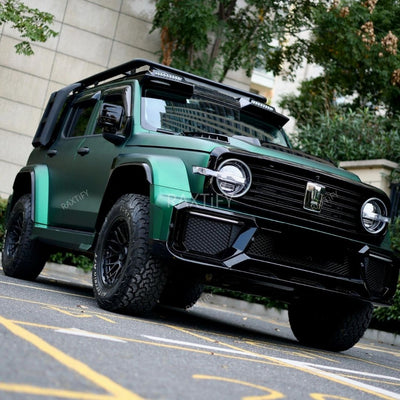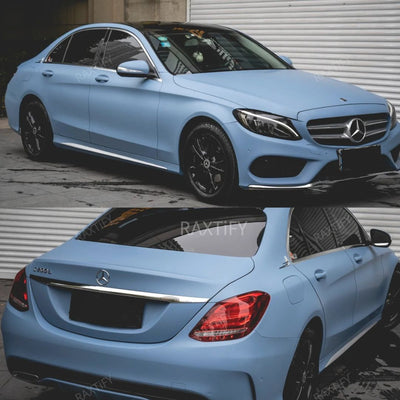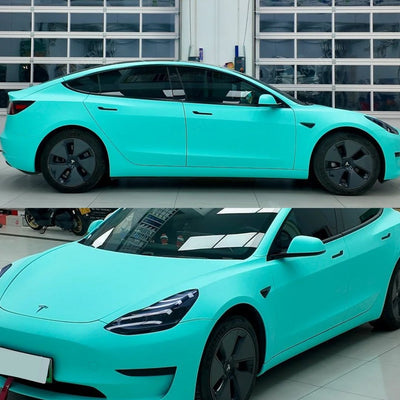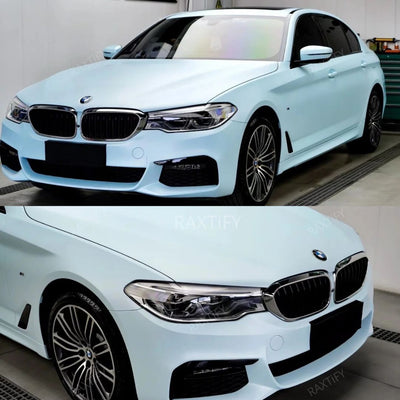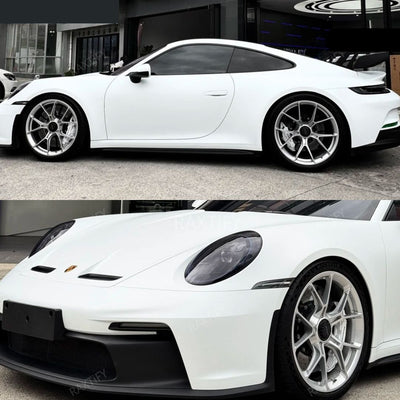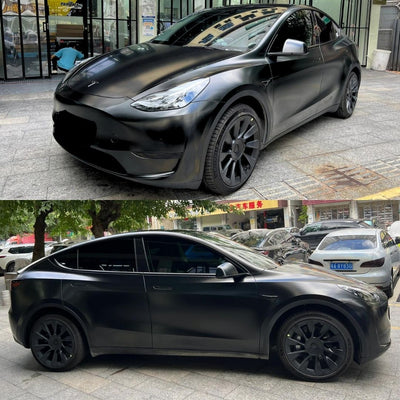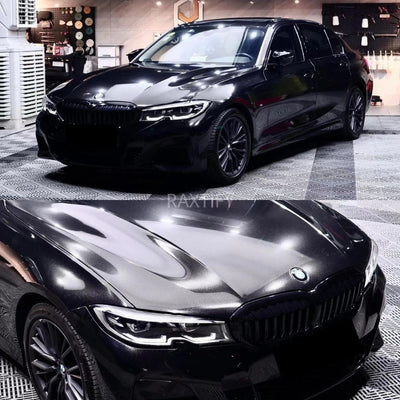
Car wrapping vs painting—which is better for your car? If you face the decision between car wrapping and painting. We will explore the pros and cons of car wrapping vs. painting and provide insights to help you decide which is the best option for your needs. When considering a choice between car wrapping and painting, here we shall discuss the pros and cons of car wrapping versus painting, hence making it more informed for the car owners as to which option should suit best in any particular case.
What is Car Wrap?
Car wrap is a vinyl film applied onto the body of a car for change in appearance or protection from damage to the underlying paint. The car wrap can be full, which completely covers the whole car, or partial, which covers only certain areas of the car. It is most popular to use color change wraps to change the color of a vehicle without having to paint it.

Car wraps typically consist of a type of vinyl called polymeric polyurethane film (PPF). This flexible, hardy material easily stretches onto a car's body. A PPF protects a vehicle's paint from scratches, chips, and other types of damage while also giving it a custom appearance.
Wrapping was invented back in the 1990s, but today, with more and more people seeking economical and custom alternatives to painting, wrapping has gained momentum. Most of the time, car wraps are utilized for advertising whereby a logo, branding, or any other graphics promoting an event or a business are displayed.

What is a Vinyl Wrap?
A vinyl wrap usually is colored or printed vinyl film applied on the car's exterior. Vinyl wraps are designed to be pretty tough and long-lasting. Sometimes they may be considered cheaper and more customizable than the more traditional jobs of painting.

Vinyl wraps are produced to stick to the body of a car using a pressure-sensitive adhesive. The vinyl film is laid on the car using numerous tools and methods that keep the job smooth and sans bubbles. Generally, this includes cleaning and preparing the surface of the car, followed by applying the vinyl film and then trimming the edges to perfection for a seamless look.
The major types of vinyl wraps include cast vinyl and calendared vinyl. Cast vinyl film is high-quality vinyl, thinner and more elastic in composition compared to calendared vinyl. It allows cast vinyl to last longer and resist most damages due to wear and tear; hence, it can be popularly used on high-class car wrapping. On the other hand, calendared vinyl refers to a heavier-gauge, less expensive type of vinyl film used for wrapping cars on a more superficial basis or temporary signs.
These two major categories also have a lot of different finishes and colors of vinyl wraps; some popular ones are matte, gloss, and satin, while metallic or chrome colors are in. They can completely change the look of any vehicle, especially if they have printed graphics, patterns, or images on them.


What is the Car Painting?
Car paint is applied to the car's exterior for its protection from the elements and to give it a certain color and finish. The layers that constitute car paint are, by convention, primer, basecoat, and clearcoat, which together combine to provide a durable, long-lasting finish.

Most of the major car paints do a good job of performance and adhere to the body surface through the development of a given protective layer that aids the resistance of environmental elements of ultraviolet rays, moisture as well as dirt. Laying down the primer forms one smooth and even face from where the paint will lie properly. There is the basecoat layer thereafter in which color and texture have already been incorporated in the paint.

The most common types of car paints include:
Enamel paint: This paint type dries into a hard, glossy finish. Enamel paint is durable and resistant to chipping and fading; however, it may be difficult to apply and requires multiple coats.
Acrylic paint: This is a water-based paint that dries very quickly and is laid easily. Acrylic paint, though less durable compared to enamel paint, is an eco-friendly alternative.
Urethane paint: The paint is highly resistant to elements in the environment and chemicals. This paint is durable and will last for a long period of time but is quite costly and difficult to apply.
Metallic paint: The paint contains minute metallic flakes for the shiny, metallic effect. Metallic paint is a real showstopper because of its appearance but usually is quite tricky to work with and match.
Pearl paint: A paint containing minute particles to give a pearlescent appearance. Pearl paint is really popular as a result of its iridescent, shimmering look; however, it's really hard to match and repair.
What is Car Wrap Material?
Well, there are several different kinds of materials used for a wrap, and each has several advantages and disadvantages. Probably the most common materials car wraps can be made out of are:
Vinyl: Vinyl is the most utilized material in car wraps. It's a flexible, resilient PPF, or polymeric polyurethane film, capable of contouring to the body of a car. Vinyl wraps come in many different finishes and colors; custom graphics and designs are possible. They are also somewhat easy to install and remove.

Polyester: Polyester is also one more rare car wrapping material. Generally, compared with vinyl car wraps, polyester ones would have a shorter lifespan, poorer installation, and more complex removal characteristics; they do yield an aesthetic effect which vinyl can't produce.


Polyurethane: Polyurethane is a type of plastic that could be used for car wrapping. But these polyurethane wraps are incredibly durable, standing up to damage from UV rays and environmental factors, though they are a bit more challenging to put on and take off compared to vinyl options.
The Factors of Choosing Car Wrap Material
Durability: A car wrap needs to be durable enough to withstand the elements and protect a car's paint job from scratches, chips, and other forms of damage. In general, vinyl will be the strongest material for a car wrap, but there are various aspects pertaining to the thickness of the material and the quality of the adhesive that will also determine durability.
Flexibility: The wrapping material has to bend to the shape of a car body without cracking or peeling. Reinforcing this process, vinyl is extremely pliable; it can be manipulated and stretched over a vehicle’s curves and contours.
Ease of installation: Wrapping the car shall not use material that is so sophisticated for installation, requiring a professional thereby. Vinyl wraps can, in general, be very easily installed if the right kind of tools and techniques are employed, whereas other materials can require specialized training or equipment in order to apply.
Cost: The wrap material is relatively expensive and will vary greatly depending on the type of material chosen, the size of the vehicle, and the intricacy of the design. Vinyl is typically the least expensive. Other materials offer some advantages to offset their higher cost.
THE COST OF CAR WRAP VS. PAINT
These cost differences can be very high between a vinyl wrap and a paint job, depending on a number of contributing factors. Generally speaking, vinyl wraps are cheaper when compared to the full paint job, while the exact cost will fall based on the size of the car, the complexity of the design, and the kind of material used.
As for the vinyl wrap: The cost usually includes the cost of the vinyl film;
The cost of the installation would be size and complexity-of-the-job dependent, usually larger and more complex costing more;
The quality of the material used, in that higher-quality films do cost more;
And any additional design or customization fees.

For paint, a job usually costs: Cost of paint, which also depends on the quality and type of paint used, normally high-quality paint costs more; It would also be dependent on the degree of prep work required and complexity in the design; and Any further design or customizing fees.

Overall, a vinyl wrap in comparison with a paint job will be determined by different factors, and thus you should consider the budget and long-term goals that your car serves for a decision on which will serve it best.
| Factor | Car Wrap | Car Paint |
|---|---|---|
| Cost | $2,000–$5,000 (depending on size and material) | $3,000–$10,000 (quality-dependent) |
| Installation Time | 1–3 days | 5–10 days |
| Durability | 2 years | 7 years |
| Customization | Easily changeable, unique finishes | Permanent, limited color range |
| Maintenance | Easy cleaning, low upkeep | Requires waxing, more care |
| Removal | Easy, non-damaging | Difficult, irreversible |
| Finish Options | Matte, Gloss, Chrome, Color-Shift, Satin,metallic | Solid, Metallic, Pearl |
| Resale Impact | Protects original paint | Permanent change |
REMOVING CAR VINYL WRAP VS. PAINT
Typically, vinyl wraps are removed with the aid of heat and buzzes that dissolve the glue and enable the vinyl to be phased out. The general idea is that closing anything is a process, it's a very time-consuming and labor-intensive process which is even worse with larger or more complex jobs. When performed correctly, the procedure should leave the vehicle's factory paint unchanged.

On the other hand, painting a car typically consists of sanding the car's original paint job to give the new paint a smooth surface to adhere to. This can be very damaging to the car's original paint job if not done properly, or if the original paint job is in bad condition. Another aspect that is factored in is the option cost and time. The removal of vinyl wrap is relatively cheaper and takes less time to remove than repainting the car. If the initial paint condition of the car is badly done or if the owner wants a good quality painting job, it would be wiser as a long-run investment to paint the car.
CUSTOMIZING CAR VINYL WRAP VS. PAINT
Vinyl wraps are available in an enormous array of colors, designs, and finishes to personalize. For example, vinyl wraps can be customized with graphics, logos, and other designs. Some vinyl wraps even look like they are made from other materials, such as carbon fiber or brushed metal. The vinyl wraps are easily removable and replaced when it's time for updates and changes.

Paint also provides a vast field of variation — color, finish, design. Car painting typically requires more time and labor than vinyl wrapping, as well as more expertise in some cases for more complex designs and finishes.

The best decision would be very much based on the people, as if a car owner wanted some removable and temporary or easy to change customizations, then, firstly, vinyl wraps would be more suitable to this person, but on the opposite paint would be more suited for those who are looking for something more permanent and that demands a lot of work.
Furthermore, the cost and duration for each will need to be factored in: while vinyl wraps are generally cheaper and quicker to apply, they may need to be replaced more often; paint is generally a more permanent solution but may require greater investment and time initially.
MAINTAINING CAR VINYL WRAP VS. PAINT
The maintenance of vinyl wraps typically includes regular cleaning with a mild soap and water solution; it is necessary to avoid the usage of harsh chemicals or abrasive materials that may further destroy the vinyl film; and finally, the protection of vinyl wrap from environmental factors such as extremely high or low temperatures causing the shrinkage and possible cracks of vinyl.

Most paint jobs are preserved through regular washes and waxes, which protect the paint from scratches and the elements. A high-quality, paint-safe wax should be used, while materials and chemicals that may be too abrasive should be avoided so as not to damage the paint job.
An additional measure of protection against external factors of the environment, including ultraviolet radiation and extremely high or low temperatures, which usually cause paint to fade, should be provided.

In comparing vinyl wraps versus paint about maintenance, vinyl wraps are rather easy to maintain since they scratch and chip less compared to paint. Vinyl wraps can be easily removed and replaced; this is a way in which one can make changes and updates as time goes on with ease. However, vinyl wraps may be more vulnerable to environmental elements than paint and may require more regular cleaning to maintain their appearance.
Paint jobs require more frequent washing and waxing to protect the paint from scratches and environmental elements, whereas vinyl wraps do not. However, with proper maintenance, a high-quality paint job will last for many years and may be more resilient to environmental factors than a vinyl wrap.
Choosing the Quality Car Wrap Brands
Quality is an issue when selecting a wrap brand while Hexi, Avery, KPMF, and 3m have been in the wrapping business for a long while. Raxtify is also a worthy competitor.Raxtify is a company offering high quality vinyl wraps at affordable prices in Gloss, Matte, Chrome, Metallic, and Color-Shift finish options. Their wraps are quick to fit up, tough and made to be used by those that are professional as well as the DIY.

Why should you pay more for a vinyl wrap when you could get the same level of quality and variety of color with Raxtify?
Metallic: This is a vinyl wrap finish added to give depth and dimension to any vehicle, in metallic vinyl wrap. This will work for anyone who wishes to give his or her vehicle that bold and stylish look.
High Gloss: This vinyl wrap finish provides a sleek, shiny look; this is the finish for anyone who wants that classic high-end look for his or her vehicle.
Chrome: This chrome vinyl wrap finish gives the look of a mirror finish with chrome, great for those who want that shiny, flashy look for one's vehicle.
Matte: This vinyl wrap finish gives a flat, non-shiny look that is appealing to those who want the subtleness in the wraps on their vehicle.
Color Shift: This finish of vinyl wrap has a multi-color effect that seems to change with every angle and light, making it unique and catchy.
FAQs
Q1. How does one take the wrap off?
A: In taking off the wraps, one needs to apply heat on the vinyl to loosen up the adhesive bond. One can do it with the use of a heat gun or with special adhesive removers.
Q2. How long does a car wrap last?
A: Car vinyl wrap can last from a few months to several years. It is dependent on the quality of the vinyl film, the process of installation, and the way the wrap is kept. Even if the vinyl is of high-quality, if caring for it is done rightly, it may last you for 5-7 years or even more.
Q3: Do vinyl wraps ruin your car?
A: When they are carefully put on and removed, vinyl wraps do not harm your vehicle's underlying paint job or its outermost layer. If done improperly, however, e.g. by wrong installation or removal, and when the car's paint job is in lousy condition, then the possibility of damage is very high. Selecting a decent installer and performing the vital upkeep work are the best ways to guarantee that there will be no damage to your vehicle.
Q4. Will it be possible to wrap a car up that has hail damage?
A: Most likely, wrapping is not a good idea over a car that has been hit by hail damage. The vinyl does not adhere very well to those areas, so it possibly screws up the vehicle's appearance and the protection of the car may not be sufficient.
Final Words
Wrapping and painting are just two of several customization options; each alternative has its own list of pros and cons. In the case of car wrapping, the client has a wider avenue for choices, the price is practical, and removing and replacing the wraps are quite comfortable tasks. However, on the reverse side, vinyl wraps may have lower resistance to damage than paint and result in the need for regular replacement. Painting that is permanent and has a high degree of durability in nature needs a lot of extra time, creativity, and skill than fixing vinyl wraps on the car's body.
In the final analysis, the auto wrapping and painting modes both are options which fully depend on the customization of the client since they have their advantages and disadvantages.









